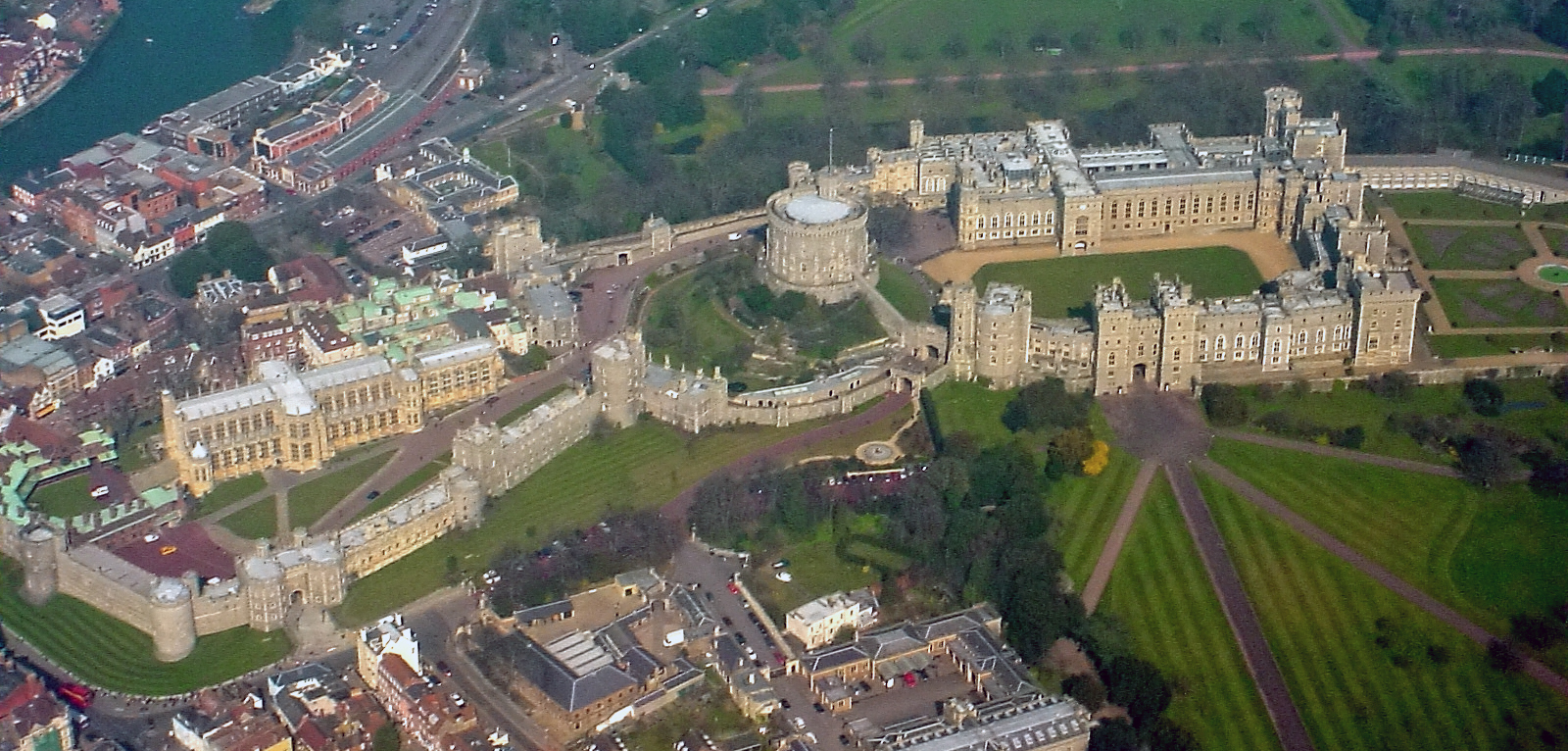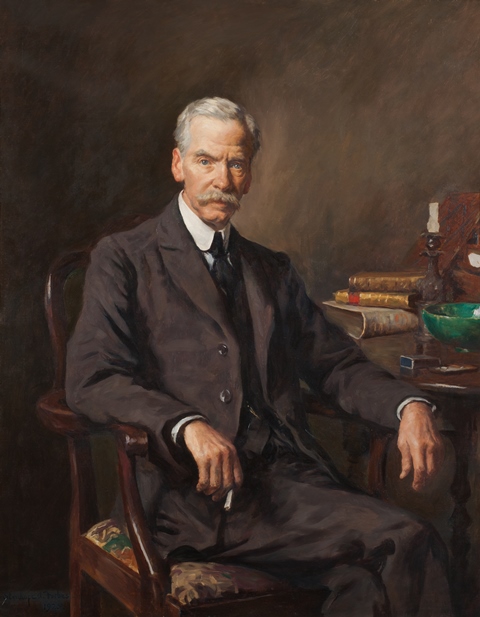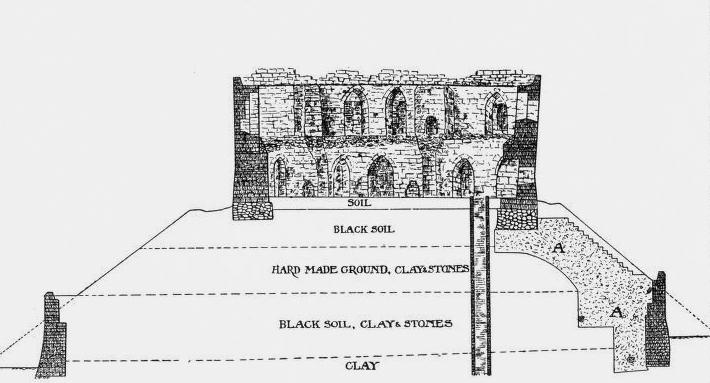|
Shell Keep
A shell keep is a style of medieval fortification, best described as a stone structure circling the top of a motte. In English castle morphology, shell keeps are perceived as the successors to motte-and-bailey castles, with the wooden fence around the top of the motte replaced by a stone wall. Castle engineers during the Norman period did not trust the motte to support the enormous weight of a stone keep. A common solution was to replace the palisade with a stone wall then build wooden buildings backing onto the inside of the wall. This construction was lighter than a keep and prevented the walls from being undermined, meaning they could be thinner and lighter. A gazetteer compiled by archaeologist Robert Higham counted 21 shell keeps in England and Wales. Examples include the Round Tower at Windsor Castle and the majority were built in the 11th and 12th centuries. Surviving English examples of shell keeps include: * Arundel, West Sussex (re-modelled post-medieval) * Berkhamps ... [...More Info...] [...Related Items...] OR: [Wikipedia] [Google] [Baidu] |
Windsor Castle From The Air Wideangle
Windsor may refer to: Places Australia *Windsor, New South Wales ** Municipality of Windsor, a former local government area *Windsor, Queensland, a suburb of Brisbane, Queensland **Shire of Windsor, a former local government authority around Windsor, Queensland **Town of Windsor, a former local government authority around Windsor, Queensland *Windsor, South Australia, a small town in the northern Adelaide Plains * Windsor Gardens, South Australia, a suburb of Adelaide *Windsor, Victoria, a suburb of Melbourne Canada *Grand Falls-Windsor, Newfoundland and Labrador *Windsor, Nova Scotia *Windsor, Ontario *Windsor, Quebec New Zealand *Windsor, New Zealand, a township in North Otago United Kingdom *Windsor, Berkshire, a town near London **Windsor Castle, Windsor, Berkshire **Windsor Great Park **Windsor (UK Parliament constituency), the constituency centred on this town **Old Windsor, a village near Windsor *Windsor, Belfast, a suburb *Windsor, Cornwall, a hamlet * Windsor, Lincoln ... [...More Info...] [...Related Items...] OR: [Wikipedia] [Google] [Baidu] |
Windsor Castle
Windsor Castle is a royal residence at Windsor in the English county of Berkshire. It is strongly associated with the English and succeeding British royal family, and embodies almost a millennium of architectural history. The original castle was built in the 11th century, after the Norman invasion of England by William the Conqueror. Since the time of Henry I (who reigned 1100–1135), it has been used by the reigning monarch and is the longest-occupied palace in Europe. The castle's lavish early 19th-century state apartments were described by early 20th century art historian Hugh Roberts as "a superb and unrivalled sequence of rooms widely regarded as the finest and most complete expression of later Georgian taste".Hugh Roberts, ''Options Report for Windsor Castle'', cited Nicolson, p. 79. Inside the castle walls is the 15th-century St George's Chapel, considered by the historian John Martin Robinson to be "one of the supreme achievements of English Perpe ... [...More Info...] [...Related Items...] OR: [Wikipedia] [Google] [Baidu] |
Totnes Castle
Totnes Castle is one of the best preserved examples of a Norman motte and bailey castle in England. It is situated in the town of Totnes on the River Dart in Devon. The surviving stone keep and curtain wall date from around the 14th century. From after the Norman Conquest of 1066 it was the ''caput'' of the Feudal barony of Totnes. History The castle occupies a commanding position atop a large hill above the town, and guards the approach to three valleys. The first castle on this site is believed to have been built by the Breton Juhel of Totnes (also known as Judhael) who was one of William the Conqueror's lieutenants. The feudal barony of Totnes was granted to him in 1068, and in order to cement his control over the area he constructed a fortification and founded Totnes Priory within the town. This first construction probably consisted of a wooden palisade and tower. On the death of King William I, Juhel lost his lands, possibly as a result of his support for the Rebel ... [...More Info...] [...Related Items...] OR: [Wikipedia] [Google] [Baidu] |
Tamworth Castle
Tamworth Castle, a Grade I listed building, is a Norman castle overlooking the mouth of the River Anker into the Tame in the town of Tamworth in Staffordshire, England. Before boundary changes in 1889, however, the castle was within the edge of Warwickshire while most of the town belonged to Staffordshire. The site served as a residence of the Mercian kings in Anglo Saxon times, but fell into disuse during the Viking invasions. Refortified by the Normans and later enlarged, the building is today one of the best preserved motte-and-bailey castles in England. History When Tamworth became the chief residence of Offa, ruler of the expanding Mercian kingdom, he built a palace there from which various charters were issued ''sedens in palatio regali in Tamoworthige'', the first dating from 781. Little trace of its former glory survived the Viking attack in 874 that left the town "for nearly forty years a mass of blackened ruins". Then in 913 Tamworth was rebuilt by Æthelflæd, Lady ... [...More Info...] [...Related Items...] OR: [Wikipedia] [Google] [Baidu] |
Restormel Castle
Restormel Castle ( kw, Kastel Rostorrmel) lies by the River Fowey near Lostwithiel in Cornwall, England, UK. It is one of the four chief Norman castles of Cornwall, the others being Launceston, Tintagel and Trematon. The castle is notable for its perfectly circular design. Although once a luxurious residence of the Earl of Cornwall, the castle was all but ruined by the 16th century. It was briefly reoccupied and fought over during the English Civil War but was subsequently abandoned. It is now in the care of English Heritage and open to the public. Architecture Located on a spur of high ground overlooking the River Fowey, Restormel Castle is an unusually well-preserved example of a circular shell keep, a rare type of fortification built during a short period in the 12th and early 13th centuries. Only 71 examples are known in England and Wales, of which Restormel Castle is the most intact. Such castles were built by converting a wooden motte-and-bailey castle, where the externa ... [...More Info...] [...Related Items...] OR: [Wikipedia] [Google] [Baidu] |
Underpinning
In construction or renovation, underpinning is the process of strengthening the foundation of an existing building or other structure. Underpinning may be necessary for a variety of reasons: * The original foundation isn't strong or stable enough. * The usage of the structure has changed. * The properties of the soil supporting the foundation may have changed (possibly through subsidence) or were mischaracterized during design. * The construction of nearby structures necessitates the excavation of soil supporting existing foundations. * To increase the depth or load capacity of existing foundations to support the addition of another storey to the building (above or below grade). * It is more economical, due to land price or otherwise, to work on the present structure's foundation than to build a new one. * Earthquake, flood, drought or other natural causes have caused the structure to move, requiring stabilisation of foundation soils and/or footings. Underpinning may be accomplish ... [...More Info...] [...Related Items...] OR: [Wikipedia] [Google] [Baidu] |
Basil Mott
Sir Basil Mott, 1st Baronet, FRS (16 September 1859 – 7 September 1938) was one of the most notable English civil engineers of the late 19th and early 20th centuries. He was responsible for some of the most innovative work on tunnels and bridges in the United Kingdom in the 40-year period centred on World War I. Early career Basil Mott was born in Leicester on 16 September 1859. He was educated at the International School, Switzerland and at the Royal School of Mines where he won the Murchison medal in 1879. He was first employed as a mining engineer with the Neston Colliery Co. in Cheshire but in 1886 was invited by J H Greathead to join the staff of the City & South London Railway (C&SLR), for which Greathead was Engineer. His work on the C&SLR gave him a taste for underground construction works that influenced the remaining 40 years of his professional life. He did well at the C&SLR and was promoted, first to resident engineer (RE) for the extension of the C&SLR from Stoc ... [...More Info...] [...Related Items...] OR: [Wikipedia] [Google] [Baidu] |
Henry II Of England
Henry II (5 March 1133 – 6 July 1189), also known as Henry Curtmantle (french: link=no, Court-manteau), Henry FitzEmpress, or Henry Plantagenet, was King of England from 1154 until his death in 1189, and as such, was the first Angevin king of England. King Louis VII of France made him Duke of Normandy in 1150. Henry became Count of Anjou and Maine upon the death of his father, Count Geoffrey V, in 1151. His marriage in 1152 to Eleanor of Aquitaine, former spouse of Louis VII, made him Duke of Aquitaine. He became Count of Nantes by treaty in 1158. Before he was 40, he controlled England; large parts of Wales; the eastern half of Ireland; and the western half of France, an area that was later called the Angevin Empire. At various times, Henry also partially controlled Scotland and the Duchy of Brittany. Henry became politically involved by the age of 14 in the efforts of his mother Matilda, daughter of Henry I of England, to claim the English throne, then occupied b ... [...More Info...] [...Related Items...] OR: [Wikipedia] [Google] [Baidu] |
York Castle
York Castle is a fortified complex in the city of York, England. It consists of a sequence of castles, prisons, law courts and other buildings, which were built over the last nine centuries on the south side of the River Foss. The now-ruined keep of the medieval Norman castle is commonly referred to as Clifford's Tower. Built originally on the orders of William I to dominate the former Viking city of Jórvík, the castle suffered a tumultuous early history before developing into a major fortification with extensive water defences. After a major explosion in 1684 rendered the remaining military defences uninhabitable, York Castle continued to be used as a jail and prison until 1929. The first motte and bailey castle on the site was built in 1068 following the Norman conquest of York. After the destruction of the castle by rebels and a Viking army in 1069, York Castle was rebuilt and reinforced with extensive water defences, including a moat and an artificial lake. York Castle f ... [...More Info...] [...Related Items...] OR: [Wikipedia] [Google] [Baidu] |
Mining (military)
Tunnel warfare involves war being conducted in tunnel and other underground cavities. It often includes the construction of underground facilities (mining or undermining) in order to attack or defend, and the use of existing natural caves and artificial underground facilities for military purposes. Tunnels can be used to undermine fortifications and slip into enemy territory for a surprise attack, while it can strengthen a defense by creating the possibility of ambush, counterattack and the ability to transfer troops from one portion of the battleground to another unseen and protected. Also, tunnels can serve as shelter from enemy attack. Since antiquity, sappers have used mining against walled cites, fortresses, castles or other strongly held and fortified military positions. Defenders have dug counter-mines to attack miners or destroy a mine threatening their fortifications. Since tunnels are commonplace in urban areas, tunnel warfare is often a feature, though usually a min ... [...More Info...] [...Related Items...] OR: [Wikipedia] [Google] [Baidu] |
Medieval
In the history of Europe, the Middle Ages or medieval period lasted approximately from the late 5th to the late 15th centuries, similar to the Post-classical, post-classical period of World history (field), global history. It began with the fall of the Western Roman Empire and transitioned into the Renaissance and the Age of Discovery. The Middle Ages is the middle period of the three traditional divisions of Western history: classical antiquity, the medieval period, and the modern history, modern period. The medieval period is itself subdivided into the Early Middle Ages, Early, High Middle Ages, High, and Late Middle Ages. Population decline, counterurbanisation, the collapse of centralized authority, invasions, and mass migrations of tribes, which had begun in late antiquity, continued into the Early Middle Ages. The large-scale movements of the Migration Period, including various Germanic peoples, formed new kingdoms in what remained of the Western Roman Empire. In the ... [...More Info...] [...Related Items...] OR: [Wikipedia] [Google] [Baidu] |
Palisade
A palisade, sometimes called a stakewall or a paling, is typically a fence or defensive wall made from iron or wooden stakes, or tree trunks, and used as a defensive structure or enclosure. Palisades can form a stockade. Etymology ''Palisade'' derives from ''pale'', from the Latin word ', meaning stake, specifically when used side by side to create a wood defensive wall. Typical construction Typical construction consisted of small or mid-sized tree trunks aligned vertically, with as little free space in between as possible. The trunks were sharpened or pointed at the top, and were driven into the ground and sometimes reinforced with additional construction. The height of a palisade ranged from around a metre to as high as 3–4 m. As a defensive structure, palisades were often used in conjunction with earthworks. Palisades were an excellent option for small forts or other hastily constructed fortifications. Since they were made of wood, they could often be quickly and easil ... [...More Info...] [...Related Items...] OR: [Wikipedia] [Google] [Baidu] |








.jpg)

